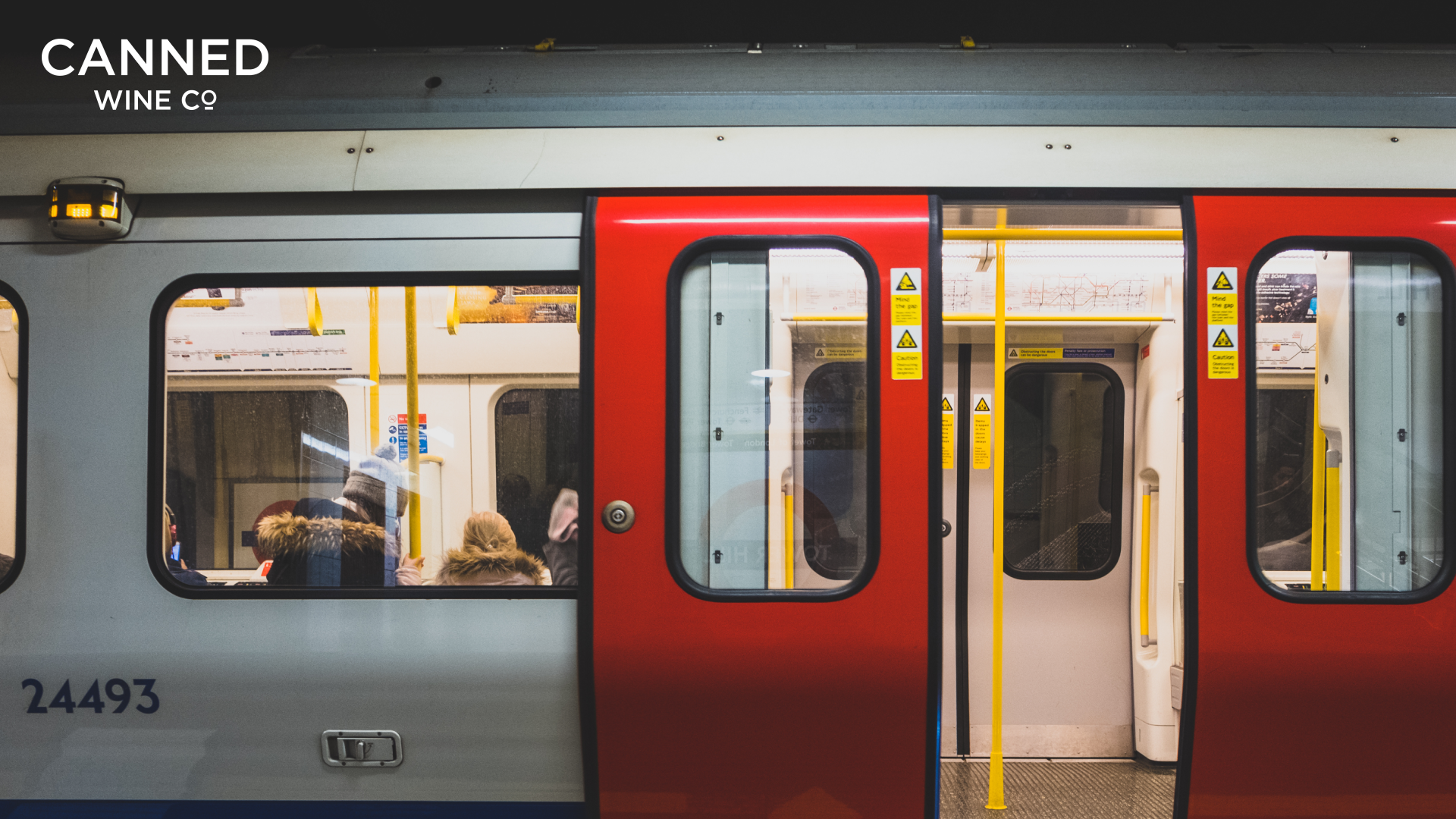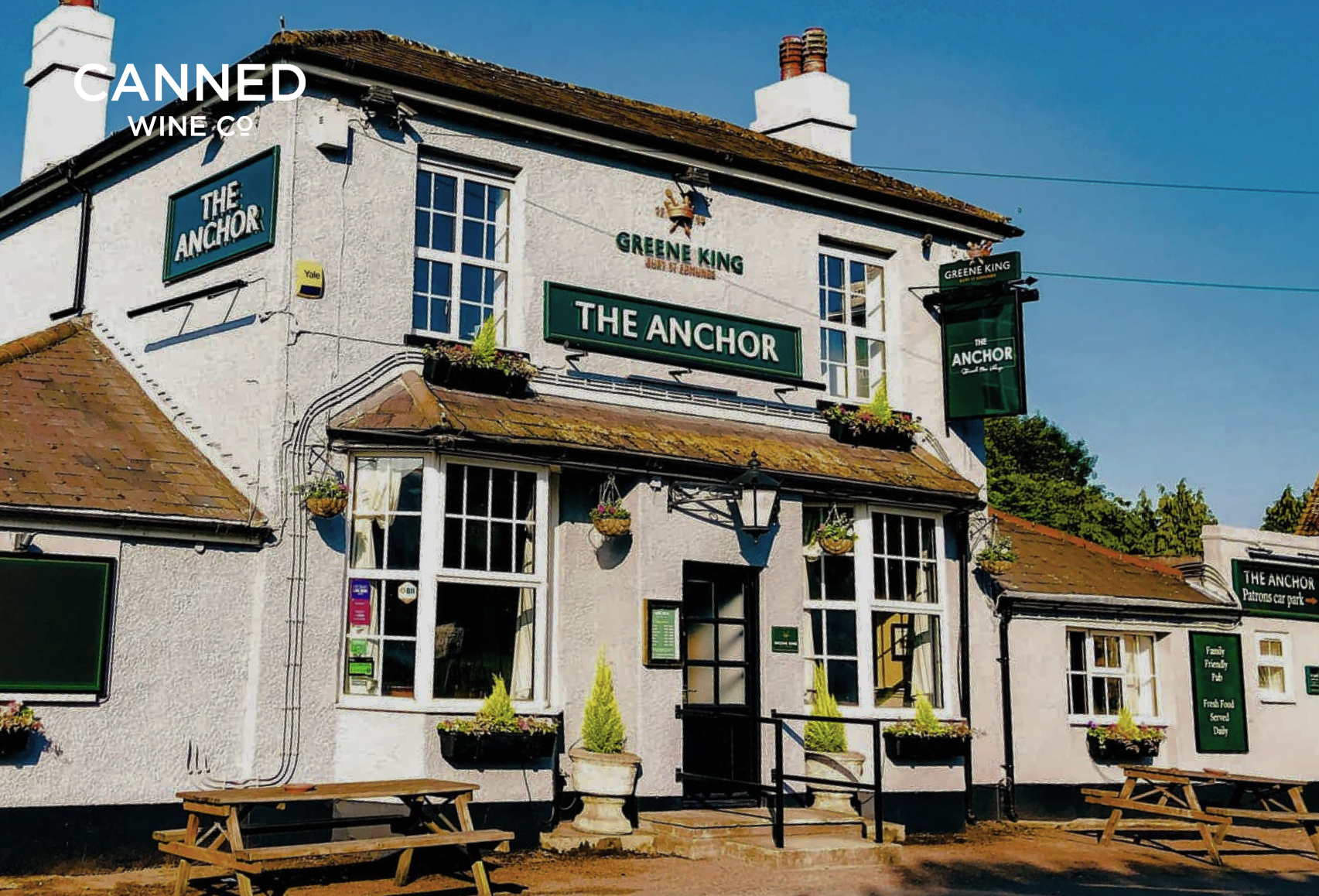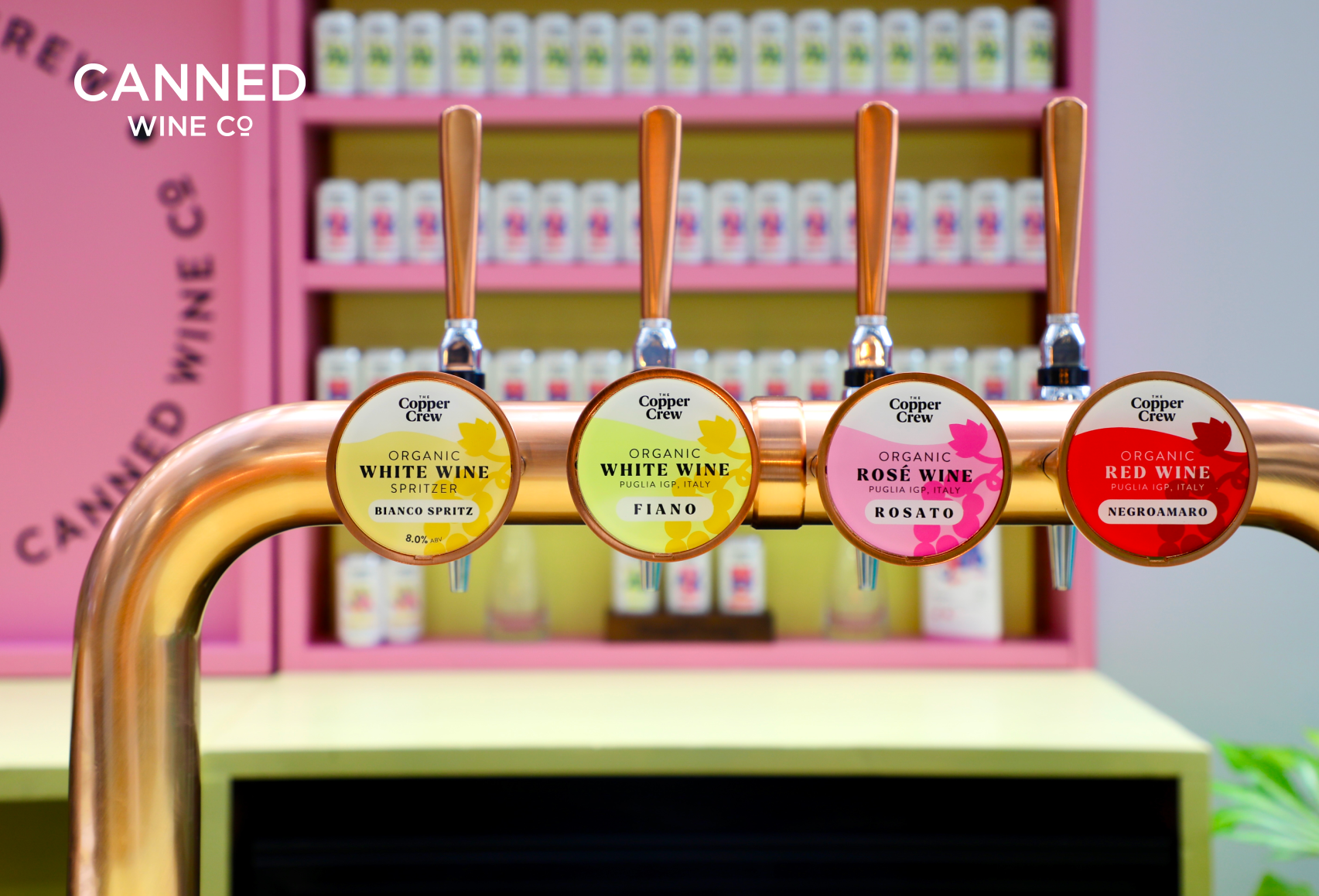Chapter 16 – Trains, Planes and Carbon Emissions in February
Like every month, February was a busy period for the Canned Wine Group team. The team went all around the UK and beyond, largely by train. There were tastings, trade shows, press nights and meetings everywhere from Glasgow to Paris. In total 7 of our 10 person team had to leave Bath for work and we travelled an accumulative 10562 km by train, with our CEO Simon alone racking up 2621 of those kilometres!

Written by Matthew Denyer.
Like every month, February was a busy period for the Canned Wine Group team. The team went all around the UK and beyond, largely by train. There were tastings, trade shows, press nights and meetings everywhere from Glasgow to Paris. In total 7 of our 10 person team had to leave Bath for work and we travelled an accumulative 10562 km by train, with our CEO Simon alone racking up 2621 of those kilometres! Some of these distances were very impressive including trips by Simon and Ben to VinExpo on the Eurostar, and Ben came back from an event in London on the Night Riviera from Paddington all the way to Truro to meet with Old Chapel Cellars.
But why does this matter to us? Sustainability is at the heart of what we do, and we do our best to ensure that sustainability informs all of our decisions. We’re not perfect (more on that later), but we try.
We’ve used the UK Government’s Greenhouse Gas Reporting for Companies guidelines to work out the CO2e – the total output of all greenhouse gases if they were just carbon emissions – comparing our travel emissions to if the team had taken these trips in cars or planes instead of trains.
Trains vs Planes vs Cars
Travel can be expensive. I think everyone at some point has been shocked by the price of a train ticket, and whilst we’re lucky enough to be a stone’s throw from Bristol, the line between Bath and Bristol is the most expensive in the UK per kilometre. Whilst the Eurostar can be quite reasonable if booked in advance, it still struggles to compete with budget airlines. In short, train travel is not the most economical option but with climate change affecting people across the globe, and increasingly having an effect on vineyards, we feel we have a responsibility to be climate conscious from both an ethical and a business perspective. We believe the CO2e savings shows why this extra cost is justified.
Comparing train travel to cars, with our team on trains, they can keep in touch with the rest of our team and customers, and utilise their travel time either for work tasks or rest. If they’re lucky enough to be travelling on a TransPennine Express they’re even able to do so whilst enjoying a can from our Canned Wine Co. range!
Our Emissions
The headline here is that these travels emitted 86.92% less CO2e than if we’d gotten into planes whenever possible and 84.29% compared to if we’d used our cars for every trip. We’ve tried to make this as accurate as possible using the government guidelines for each staff member’s vehicle type, and the type of train line the journey uses. This isn’t a perfect calculation as the guidelines use averages over the UK and international networks. We’ll dive slightly deeper into this in the data limitations section at the end.
Our math shows that our train travels in February released 296kg CO2e into the atmosphere. This may sound like a lot, and well, it is. It’s the same as powering a standard lightbulb in the UK for 148,000 hours. But if we’d jumped in planes on journeys where it was feasible to do so, such as from Bath via Bristol to Edinburgh, Glasgow, Paris and from London to Truro, we would have been responsible for 2263kgCO2e, or 1,131,500 hours of a lightbulb – this is equivalent to 129.1 years! In fact, just a return flight from Bristol to Edinburgh, including getting to and from both airports, would have been responsible for 277kgCO2e, practically the same as the emissions of all our 37 train trips combined!
Our Imperfections
You may notice that 37 is an odd number. And as I said earlier, we weren’t perfect. After an event in Birmingham making it to the last train home would have been very tight and it was decided that in this case the wellbeing and safety of the team was more important. Whilst we prioritise sustainable travel here at Canned Wine Group, employee wellbeing is also tantamount and this is also considered in travel decisions as per our Sustainable Travel Policy.
37 trips is also a lot of travel for our small team! We try to avoid travelling whenever possible, choosing instead to host video conferences and phone calls when appropriate. These options were considered before each of these trips but ultimately the vast majority of these trips involved events such as tastings where in-person attendance was necessary. When travelling for meetings which we felt were needed to be attended in person we did our best to combine multiple meetings.
Team members also drove to visit a vineyard in Norfolk. The vineyard is in a remote area without even a bus stop nearby so the decision was made that driving there was more feasible. Whilst technically the 6-hour trip involving two trains, the London underground, two buses and a half hour walk, or taxi, in each direction would have been possible, it would have been very tough on the team members involved. Unfortunately, this round trip emitted 239kg CO2e, comparable to 81% of our emissions for all of our train trips combined.
Conclusion
Overall, we’re very pleased with our efforts to travel sustainably whenever possible. Though we’re aware that, like with most things in life, we could have done better, overall our team’s commitment to choosing a responsible method of transport is something we’re very proud of here at Canned Wine Group. We also hope that National Rail continues with its journey towards having a Net Zero network throughout Britain by 2050, making choosing the train an even better option than it already is.
Some Limitations on our data;
Whilst we’re lucky that at least part of the journey from here in Bath to London is electrified, which produces far fewer carbon emissions, but between here and Chippenham, the train uses diesel. Such a specific route which we’ve used frequently would have a different CO2e compared to the national average of 0.03546 CO2e. For example if we had made frequent return trips to Chippenham our carbon footprint per kilometre travelled would be much higher than someone who frequently travels from Chippenham to London Paddington, but this is not allowed for in the government’s data guidelines which use an average of the UK system.
Ideally, we’d have all the data needed to accurately report specifically on each of our specific journeys but failing that the government guidelines are, if not the best, then the fairest way to average out the likely impact of our journeys.
Another caveat is that we don’t have the guidelines yet for this year, so our analysis was made using 2024’s data.
Our full carbon footprints are being calculated with Zevero to calculate all emissions from business travel and commutes, to purchased goods and services, electricity and capital goods.




